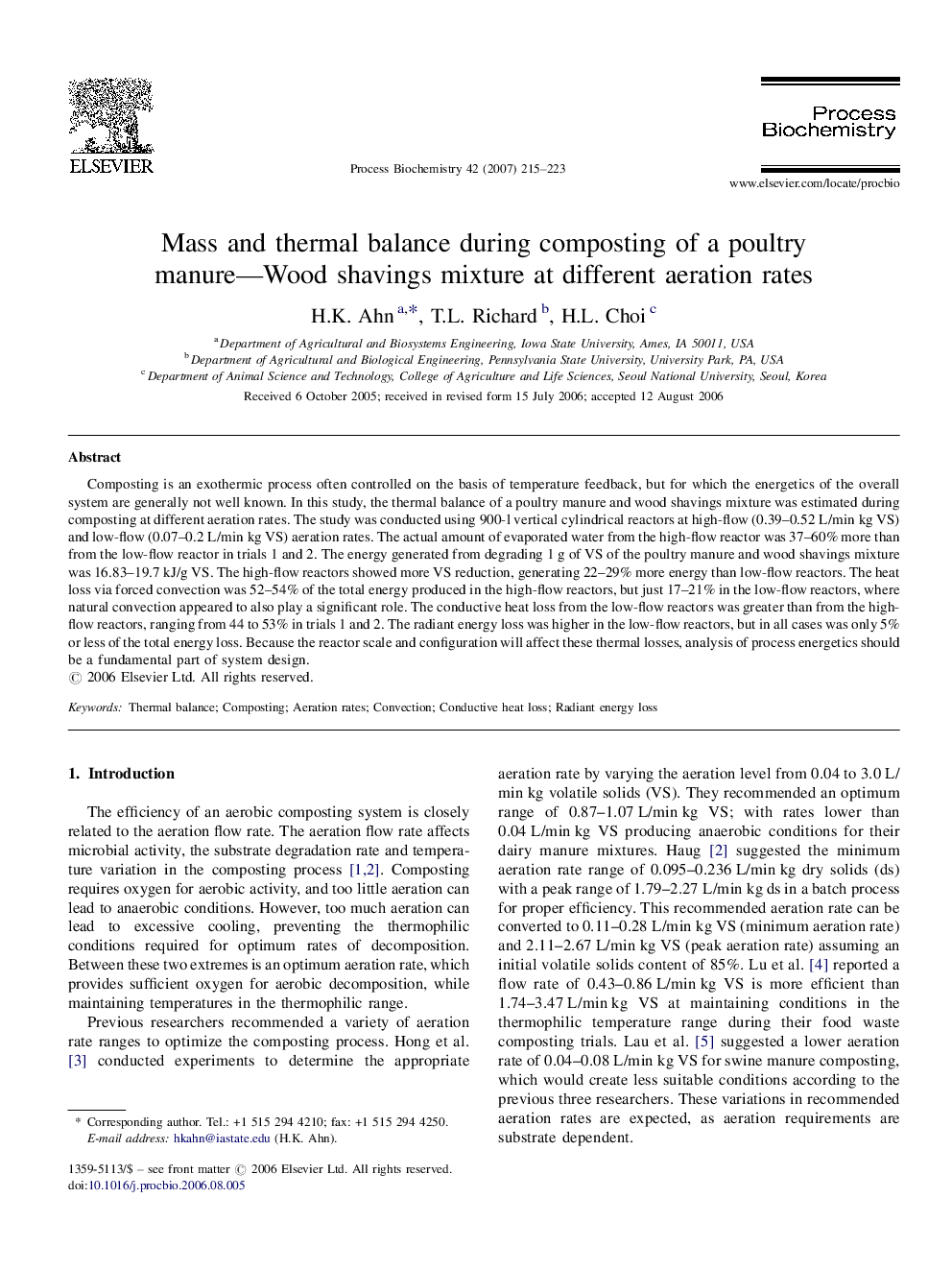| Article ID | Journal | Published Year | Pages | File Type |
|---|---|---|---|---|
| 35960 | Process Biochemistry | 2007 | 9 Pages |
Composting is an exothermic process often controlled on the basis of temperature feedback, but for which the energetics of the overall system are generally not well known. In this study, the thermal balance of a poultry manure and wood shavings mixture was estimated during composting at different aeration rates. The study was conducted using 900-l vertical cylindrical reactors at high-flow (0.39–0.52 L/min kg VS) and low-flow (0.07–0.2 L/min kg VS) aeration rates. The actual amount of evaporated water from the high-flow reactor was 37–60% more than from the low-flow reactor in trials 1 and 2. The energy generated from degrading 1 g of VS of the poultry manure and wood shavings mixture was 16.83–19.7 kJ/g VS. The high-flow reactors showed more VS reduction, generating 22–29% more energy than low-flow reactors. The heat loss via forced convection was 52–54% of the total energy produced in the high-flow reactors, but just 17–21% in the low-flow reactors, where natural convection appeared to also play a significant role. The conductive heat loss from the low-flow reactors was greater than from the high-flow reactors, ranging from 44 to 53% in trials 1 and 2. The radiant energy loss was higher in the low-flow reactors, but in all cases was only 5% or less of the total energy loss. Because the reactor scale and configuration will affect these thermal losses, analysis of process energetics should be a fundamental part of system design.
